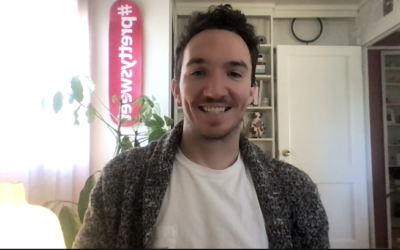On October 10, The Marketing Alliance (formerly BMA Colorado) will host Jeff Pugel, founder of Ignition LLC, at Look Listen’s Denver office for the pre-work discussion: Morning Brew: Filling the Funnel — Strategy, Tactics & Tools to Drive Revenue. Ahead of that chat, we were interested in learning more about Pugel and what his experiences have taught him as a digital marketer in this fast-paced industry.

Look Listen: What was the ah-ha moment or the reason you got to this point in your career?
Jeff Pugel: Man, that’s like asking me who’s my favorite kid. In one sense, it goes back to my first internship junior year in college, working under a media director at small NYC agency. I gave him a media buy and his response was “I love it; I’m buying it.”
After that experience, I was hooked. From there, I just kept making a series of refinements over two-plus decades that got me to this point. For most of my career, I’ve been in agency world. But at one agency I worked with, they actually had to close doors because they didn’t get any new business. That was also an aha moment for me. New business for agencies is pivotal.
So I married the media buyer experience — where I’m being pitched to constantly by TV and radio sales people and can see what they’re doing — with agency experience. And now I’m helping other companies, especially marketing companies, do better on the sales and new business side. One thing I noticed quite early on is that most agencies are a) not doing it or b) doing it wrong, and then wondering why they’re not growing or getting the clients they want.
LL: What mistakes are marketers making?
JP: I equate everything to a three-legged stool. All three legs have to be present to stand upright. Most marketers tend to be missing a leg or two of these three: 1) Word of mouth / referral, 2) inbound channels (paid media, SEO, SEM, content marketing), and 3) outbound channels (sales and prospecting).
I see most companies relying too much on word of mouth and inbound channels for new business. The problem there is, especially with word of mouth, is it’s not predictable or scalable. You don’t want to have a key new business channel out of your control. Referrals are out of your control. That’s where companies get into trouble.
LL: Is there an organization that’s taking an innovative approach, anyone doing it right?
JP: There are a lot of companies, but it’s hard to think of any specific one. I have noticed that the smaller companies tend to be scrappy. They don’t have the unlimited resources of a Fortune 500 company, so they try harder and embrace the avant-garde approaches. Plus, they’re trying account-based marketing. You should own a niche and grow from there.
I do promise I’ll expand more on one company’s unique approach during the Morning Brew.
LL: What’s next in B2B marketing?
JP: Marketers are somewhat taken with the new shiny object. That’s human nature, but that’s not always the right thing.
The thing to keep in mind going forward is that digital is the new main arena for B2B marketing. There will always be non-digital components like print and trade shows, but digital is the main attraction.
One part is the target-ability of digital media to reach an exact audience member. If you’re trying to find VPs and higher of marketing, for example, you can just start finding those needles in a haystack with snipe-like accuracy in terms of your messaging. You don’t have to target everyone in the organization. Become hyper-hyper-focused. The downside of that strategy, of course, can be that it becomes a gold rush, and an area that was once new becomes oversaturated very quickly, and it gets very noisy.
The other part is the demographic trends of where people are consuming information. More and more, that’s online, especially with the Millennial generation, who are quickly becoming a force in B2B buying. Marketers need to meet their buyers where they are and sometimes there is a disconnect between a marketing director or company leader sticking with the tried-and-true versus innovating and meeting their buyer on their level.
Think of things as if you were a startup or like it’s your own company. Be scrappy through all of that. The best ideas and best approaches come from that. And it’s not about doing a whole host of things; it’s about just doing one thing and doing it as best as you can.





